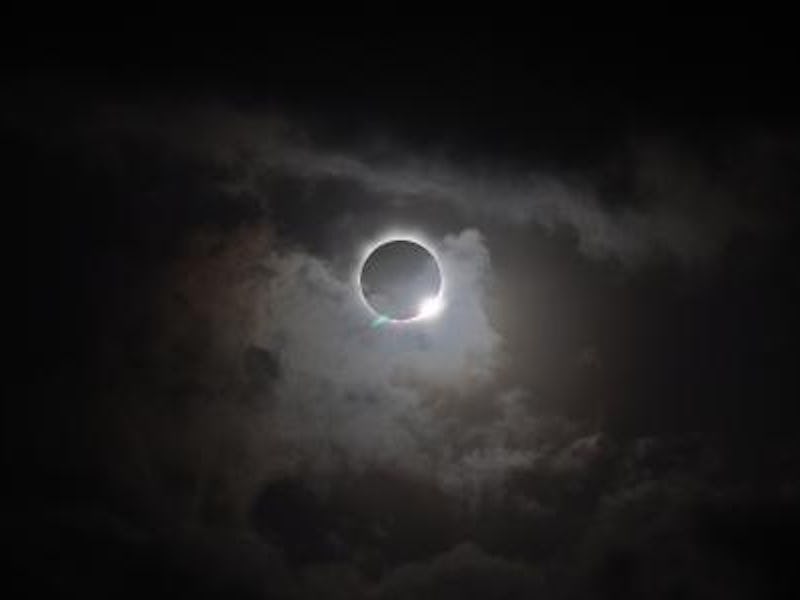You need to see the total solar eclipse on Monday
If you can't be there in person, you can still tune in virtually.

CELESTIAL OBJECTS COME AND GO FROM OUR VIEW IN THE NIGHT SKY, as they fling by or orbit around the Sun. Whether it be the Full Moon, a meteor shower, or just the best night to see Mars, we're here to direct your eyes skyward and appreciate the wonders of space from Earth.
This week, we're asking you to marvel at the spectacular beauty of the total solar eclipse, which will loom over the skies in South America on Monday, December 14.
A solar eclipse takes place when the Moon is wedged right in the middle between the Sun and the Earth during its orbit, blocking the light of our host star. As the shadow of the Moon drapes over the star, the Sun's light appears as a burning 'ring of fire' from behind the shadow of the Moon.
Employees from NASA's Jet Propulsion Laboratory witness a total solar eclipse on August 21, 2017.
The only part of the Sun still visible is the star's corona, an aura of plasma around the Sun which extends millions of kilometers away from the star.
This total solar eclipse can be seen over an area extending across 56 miles in South America. The total eclipse will cover everywhere from Saavedra, Chile to Salina del Eje, Argentina. People located in Southern Chile and Argentina outside this path will see a partial solar eclipse, in which the Moon only covers part of the Sun’s disk.
Antarctica will also witness up to a 40 percent partial solar eclipse. Certain parts of Southeastern Africa, including Cape Town, South Africa, will be exposed to up to a 60 percent partial solar eclipse right before sunset.
Totality, the moment when the Moon completely blocks the Sun, will begin in Saavedra at 1:00 p.m. local time, according to NASA.
The rare event will last for a mere two minutes and 10 seconds.
A total solar eclipse usually draws in a large crowd of sky gazers from all over the world. But due to travel restrictions as a result of the Covid-19 pandemic, far less people will be able to experience it this year.
If you are not able to be there to witness it in real life, NASA will broadcast the beautiful totality live at 9:40 a.m. Eastern. You can tune in by following this link.
The last total solar eclipse took place on June 21, and was visible to onlookers in Central Africa, the Southern Arabian Peninsula, Pakistan, Northern India, and South Central China. A partial eclipse was also visible in most of Asia, Africa, Southern, and Eastern Europe, Northern Australia and parts of the Pacific and Indian Oceans.
The next annual solar eclipse will pass over Canada, Greenland, and parts of Asia on June 10, 2021. The next total solar eclipse will return to South America on Dec. 4, 2021.